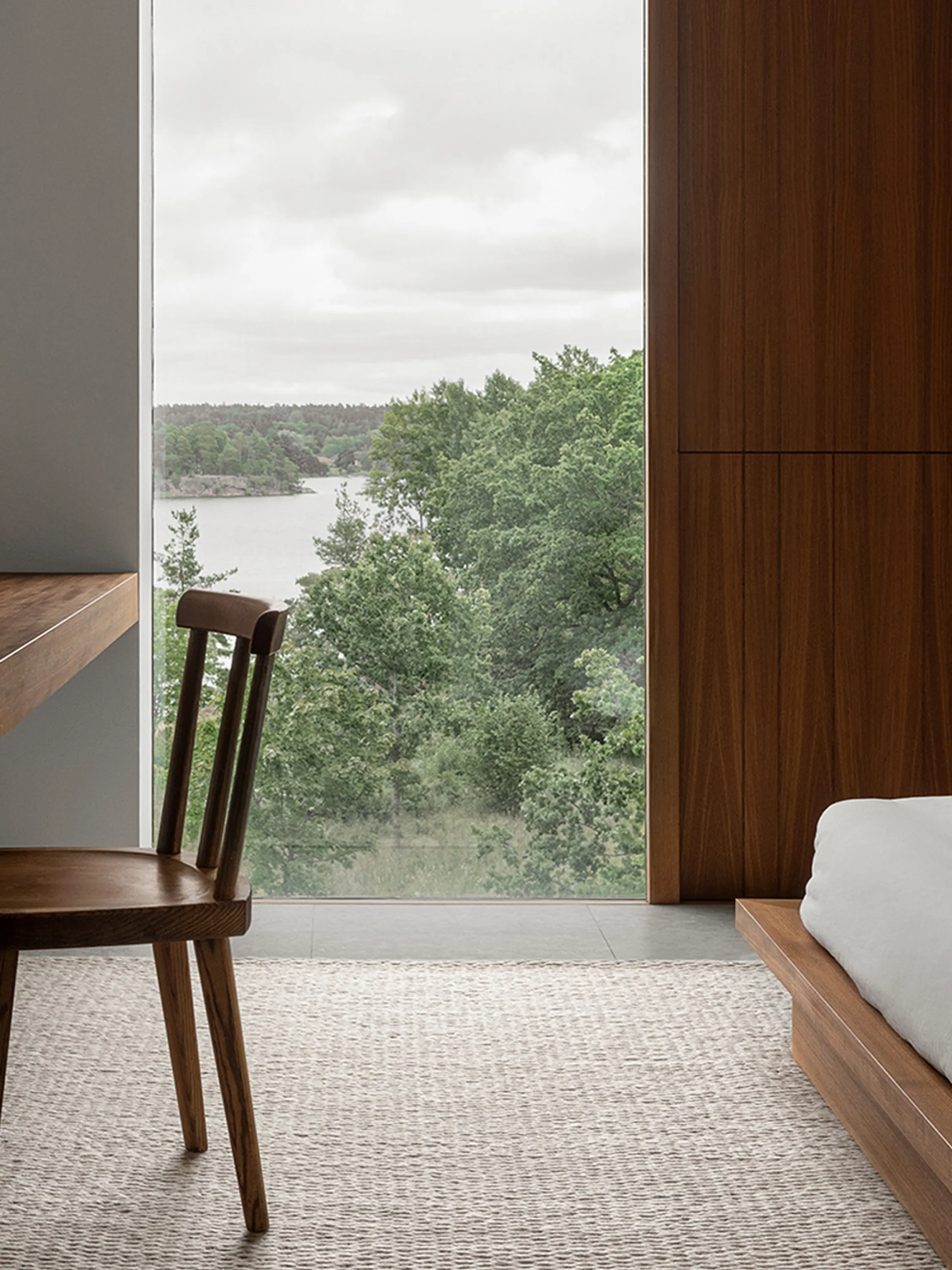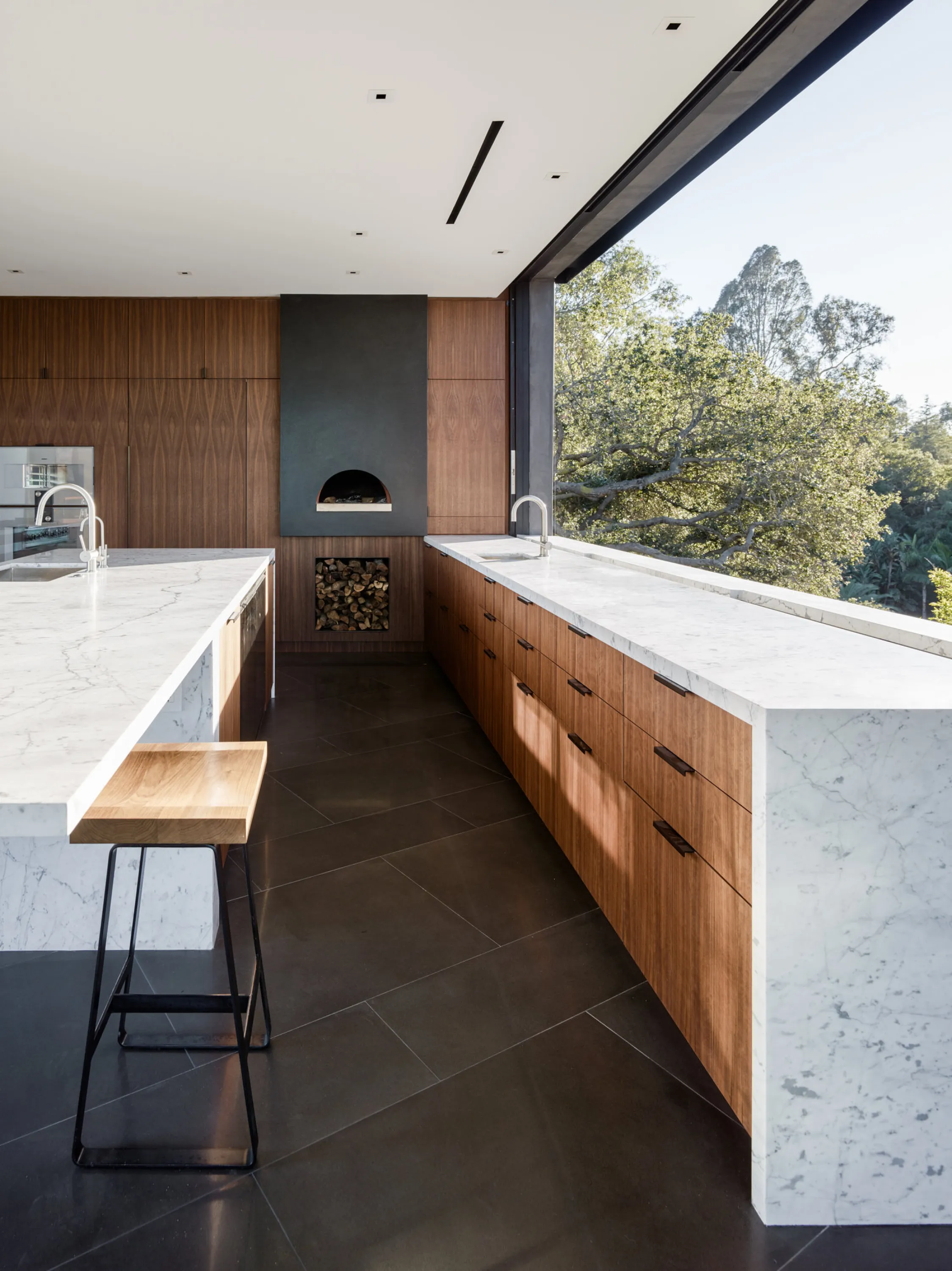Biophilic moodboards: making interiors calming with prospect views
Imagine you are on a beach. You look towards the sea and your sight gets lost in the boundless deep view, down to the horizon. This is prospect. Now imagine you are in a park or a rather sparse area of forest. If you look in front of you, you’ll have trees here and there, but watching through the branches you’ll still be able to see in the distance. This is also prospect. In short, the biophilic notion of prospect refers to uninterrupted views over a distance.
This episode of Biophilic Moodboards looks into prospect and how it applies to designed spaces…

About prospect views
Prospect has been shown to reduce stress levels by providing a sense of comfort. Granting visibility into the distance, prospect views allow control and supervision of the surrounding environment, thus conveying an overall feeling of safety. This reaction goes back to the early days of humankind. Our ancestors lived in wild savannah environments where seeing into the distance meant being able to spot predators or other dangers. In that context, prospect views provided safety in the most literal sense. Even if this is no longer the case these days, the human brain still responds in the same way to open uninterrupted views.
Prospect works in combination with refuge. A balanced interaction of these contrasting features is what achieves ideal comfort and safety: being able to look far into the distance from a protected and sheltered place.

Prospect views in interiors
In interior design, prospect views have the ability to visually elongate a space, making it feel airy and spacious.
One of the main ways to achieve prospect in interiors is through open spaces. To zone different functional areas or add privacy, separation can still be achieved using dwarf walls or some kind of see-through partition: smoked glass doors, shelving units that are open on both sides, perforated room dividers, as well as plants plants.


Blurring boundaries
Prospect can also be achieved by blurring the boundaries of interior spaces: through indoor-outdoor layouts, wide windows, and more…
Opening the space to a view of nature will also allow taking in all the shapes, colours, textures, movements, changes and sensory richness that come from outdoors, connecting the interior with its surroundings.


Taking inspiration from the features of nature’s spatial layouts and their effect on people, the notion of prospect offers an occasion to reflect on the overall experience of designed spaces, making them more intentional and better suited to their occupants.
Further resources:
Available in the shop, anooi’s publications explore the nuances of a biophilic ethos, highlight anooi’s perspective on the topic, and cover the studio’s ongoing research in biophilic thinking and design.